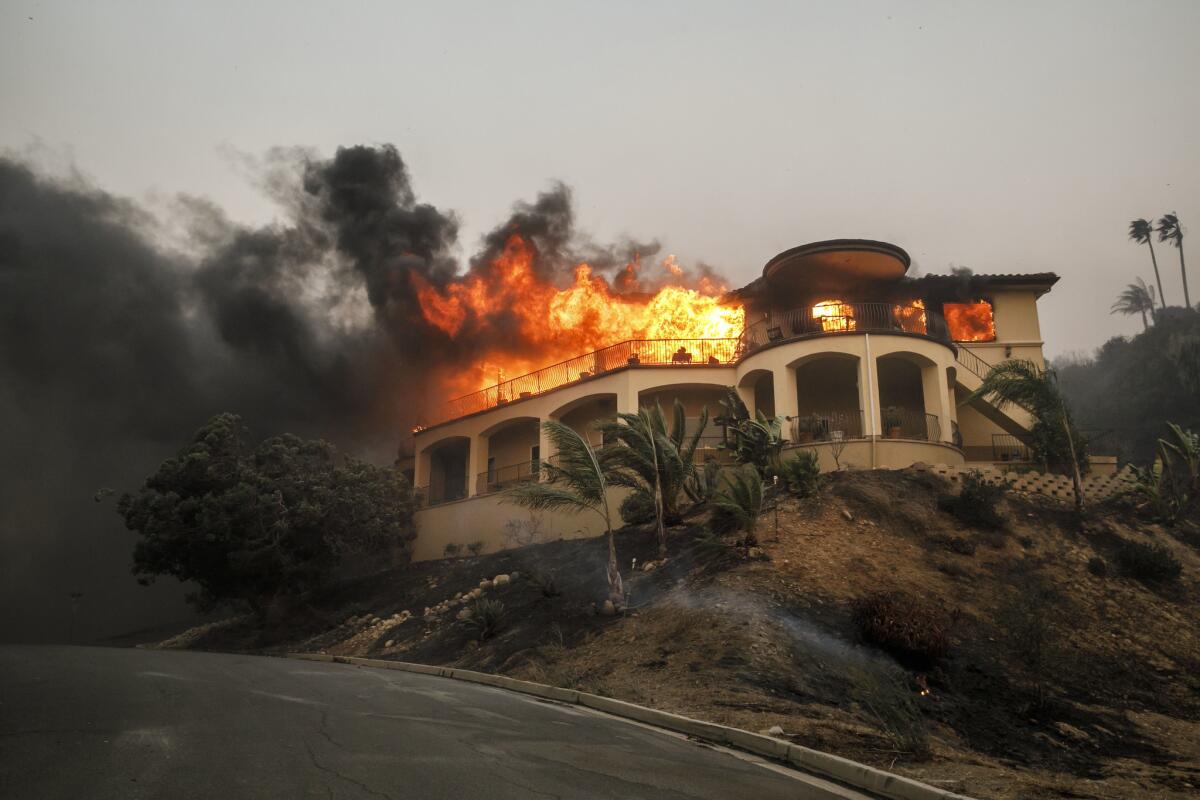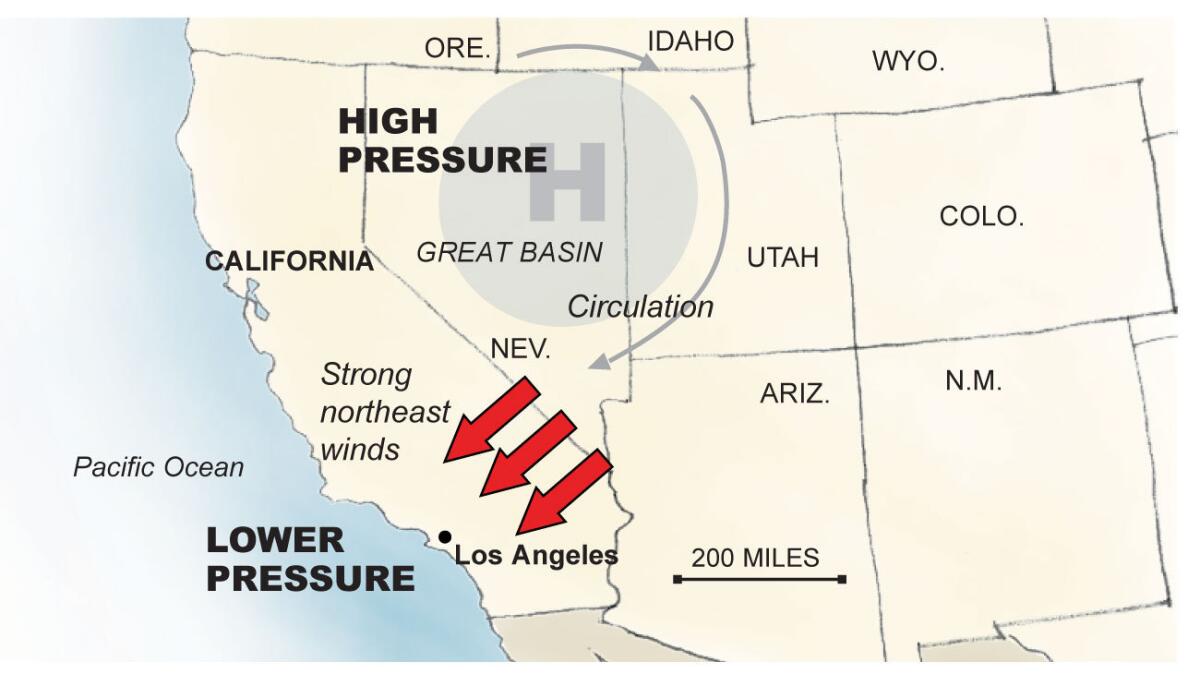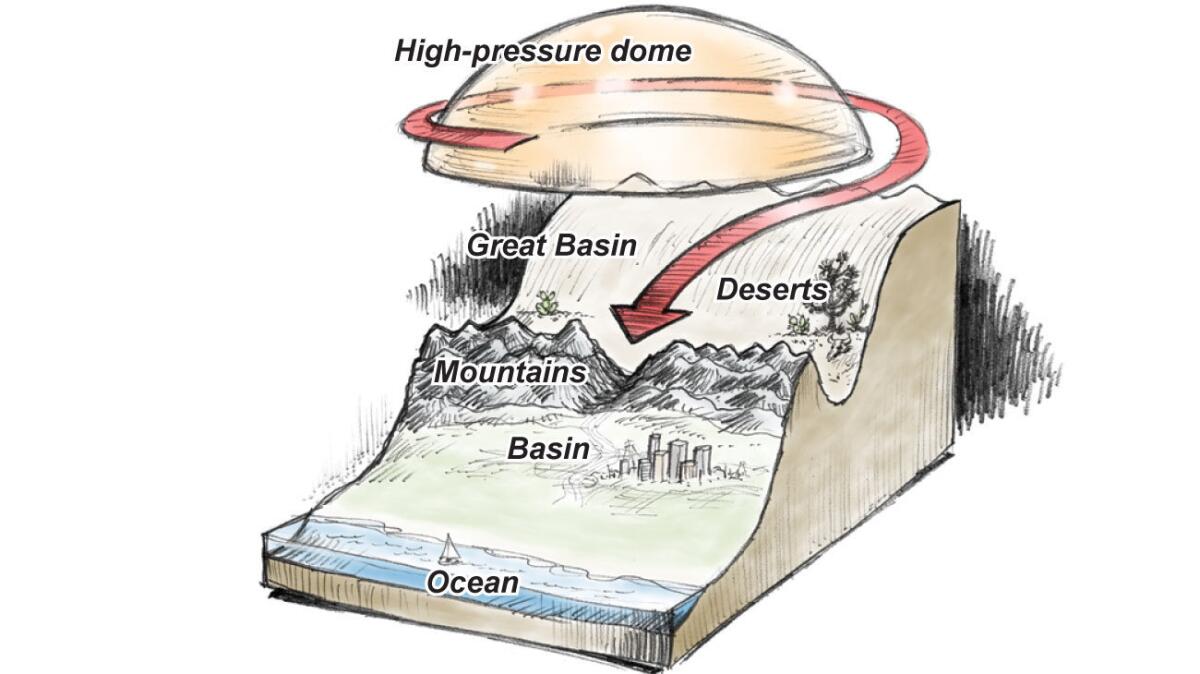The worst is yet to come with Santa Ana winds strengthening this week

- Share via
It appears the worst is still to come when it comes to the powerful Santa Ana winds fueling the destructive wildfire plaguing a swath of Ventura County.
The winds, with gusts topping 50 mph, are expected to continue for at least the next three days, the National Weather Service said.
“Generally, it’s awful fire weather today, tomorrow and Thursday,” said forecaster Ryan Kittell. “The winds we’re seeing right now are … plenty strong to drive a fire.”
“Thursday looks potentially the worst. … We’re still going to have the winds, dry relative humidity and maybe 10 degrees warmer,” Kittell said.

THE DEVIL WINDS
This is the season, with a vengeance
The winter months are usually when Southern California sees Santa Ana winds, which have been responsible for some of the region’s most catastrophic fires. Some of the worst fires occur in October, when hot conditions and heavy winds are a deadly combination.
The winds this week were cool, Kittell said, but powerful and dry. And that was enough.
Santa Ana winds are strong, extremely dry down-slope winds in Southern California and northern Baja California. They originate inland in desert regions and occur mainly in the fall and winter, but can arise during other seasons.
Most Santa Ana wind events are caused by high pressure in the the West’s Great Basin and lower pressure off the coast. Air from areas of high pressure flows toward those of lower pressure, and the gradient, or difference, causes the intense winds.
Air from areas of high pressure over high ground inland flows down toward sea level in Southern California. The sinking air heats up, loses moisture and speeds up, especially as it squeezes through canyons.
The severity of Santa Ana winds varies by year. Some years see less strong winds than others. The winds in some years — such as 1993, 2003 and 2007 — have produced multiple destructive fires.

UNSTOPPABLE FORCE
Wind drove the destruction, and there was little firefighters could do
Ventura County fire officials said the current winds, which began Monday, were so powerful that there was little they could do to stop the flames spread by the turbulent conditions.
"The prospects for containment are not good,” Ventura County Fire Chief Mark Lorenzen said during a news conference early Tuesday. “Really, Mother Nature is going to decide.”
In areas around the Thomas fire in Ventura County, winds were gusting at about 40 mph as of 8 a.m. Tuesday, Kittell said. An increase to 50 mph was expected by the afternoon, he said.
The winds were not expected to subside until at least 6 p.m., he said, with conditions improving overnight before they worsen again with sunrise.
Already browned from the hottest summer on record, the vegetation on Southern California’s mountains and hillside is continuing to dry out and turn into kindling ready to burn. A recent report from the U.S. Drought Monitor said the area’s soil is unusually dry.
Most of Southern California is considered abnormally dry or in moderate drought conditions, the report stated.

LONG-TERM FORECAST
A change after Thursday
The Santa Ana winds are expected to dissipate by Thursday night but temperatures will increase going into the weekend, Kittell said.
Sign up for Essential California
The most important California stories and recommendations in your inbox every morning.
You may occasionally receive promotional content from the Los Angeles Times.








